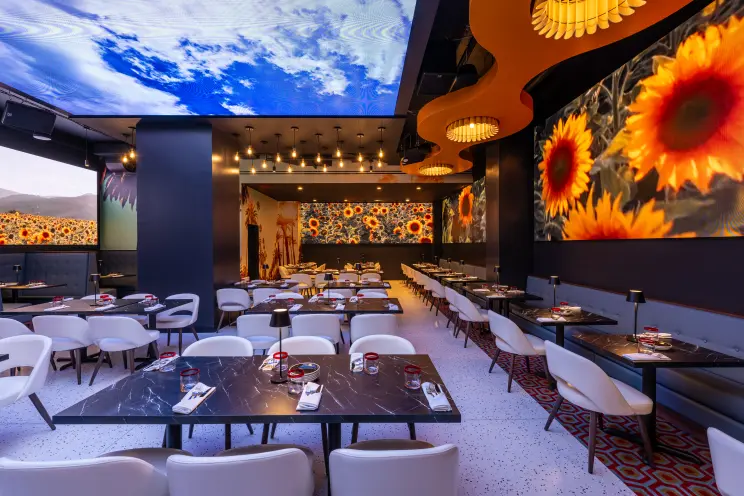In the fast-paced world of advertising, billboards have stood the test of time, evolving from simple hand-painted signs to high-tech digital displays that captivate audiences. As we navigate through cities or along highways, these towering structures offer a snapshot of consumer culture, showcasing everything from fashion and technology to food and entertainment. This article delves into the dynamic world of billboard advertising, exploring its types, effectiveness, and innovative strategies for maximizing your out-of-home (OOH) marketing efforts.
What is Billboard Advertising?
Billboard advertising involves large-scale print or digital displays placed in high-traffic areas to catch the attention of passersby. As a prominent part of OOH advertising, billboards are strategically located along bustling roads, near transit hubs, and in urban centers where they can reach a broad audience. Unlike traditional inbound marketing strategies, billboard advertising does not send messages directly to consumers but instead relies on consumers encountering the ads in their daily routines.
The Evolution of Billboards
From quaint painted barn rooftops to the vibrant digital screens of Times Square, billboard advertising has undergone a significant transformation:
- Early Days: Initially, billboards were rudimentary signs painted on walls and wooden boards, primarily used for political campaigns and circus posters.
- The Golden Age: The advent of the automobile era expanded the reach and effectiveness of billboards as more people traveled by road.
- Technological Advancements: The shift from hand-painted canvases to printed vinyl and digital displays has revolutionized the design and flexibility of billboard ads.
Types of Billboards and Their Uses
Billboard advertising today is diverse, with several formats catering to different marketing needs and environments:
- Static Billboards: These are the quintessential billboards, featuring large, unchanging images ideal for long-term brand campaigns. Their persistence in high-visibility areas builds brand recognition over time.
- Digital Billboards: Equipped with LED technology, these billboards offer the versatility to change ads quickly and incorporate animations, real-time updates, and interactive content, making them suitable for timely or dynamic campaigns.
- Three-Dimensional Billboards: By adding physical depth or digital 3D effects, these billboards create immersive experiences, making them perfect for launches and high-impact advertising.
- Mobile Billboards: Ads on wheels, these billboards traverse specific routes, offering targeted advertising that can be adjusted according to geographic and demographic insights.
- Interactive Billboards: Featuring touchscreens, QR codes, or augmented reality, these billboards engage directly with consumers, providing interactive experiences that enhance engagement and memorability.
Strategic Placement and Timing
Choosing the right location and timing can significantly enhance the effectiveness of billboard advertising. Key considerations include:
- Traffic and Visibility: High-traffic areas such as expressways, main streets, and near popular landmarks ensure maximum visibility.
- Audience Demographics: Placement should align with the demographic profile of the target audience, such as near universities for youth-oriented products or business districts for B2B services.
- Timing for Campaigns: Aligning billboard displays with specific events, seasons, or consumer behavior patterns can lead to higher engagement and conversion rates.
Integrating Billboards with Digital Strategies
While powerful on their own, billboards yield the best results when integrated with digital marketing strategies:
- Cross-Promotion: Use billboards to drive traffic to digital platforms by including website URLs, social media handles, or QR codes.
- Data-Driven Insights: Combine data from digital campaigns (like geographic and demographic information) to optimize billboard locations and messaging.
- Multi-Channel Campaigns: Coordinate billboard messages with online ads, social media posts, and email campaigns to reinforce the advertising message across multiple channels.
Cost-Effective Billboard Advertising: My Secret Weapon
To maximize ROI on billboard advertising, consider these cost-effective strategies:
- Negotiate Longer Contracts: Longer-term billboard rentals can often secure lower rates per month.
- Choose Off-Peak Locations: Less competitive yet still high-traffic areas can offer lower rates.
- Utilize Community Billboards: Local community or digital billboards can be more budget-friendly and still reach significant local audiences.
Billboard advertising remains a potent tool in the marketer’s arsenal, offering wide-reaching impact and versatility that few other advertising forms can match. By understanding its evolution, leveraging various types, and integrating it with digital strategies, businesses can effectively use billboards to enhance brand visibility and engage diverse audiences.
Ready to take your brand’s visibility to new heights with effective billboard advertising? Start planning your next OOH campaign with these insights, or contact our team for personalized strategies and solutions.

